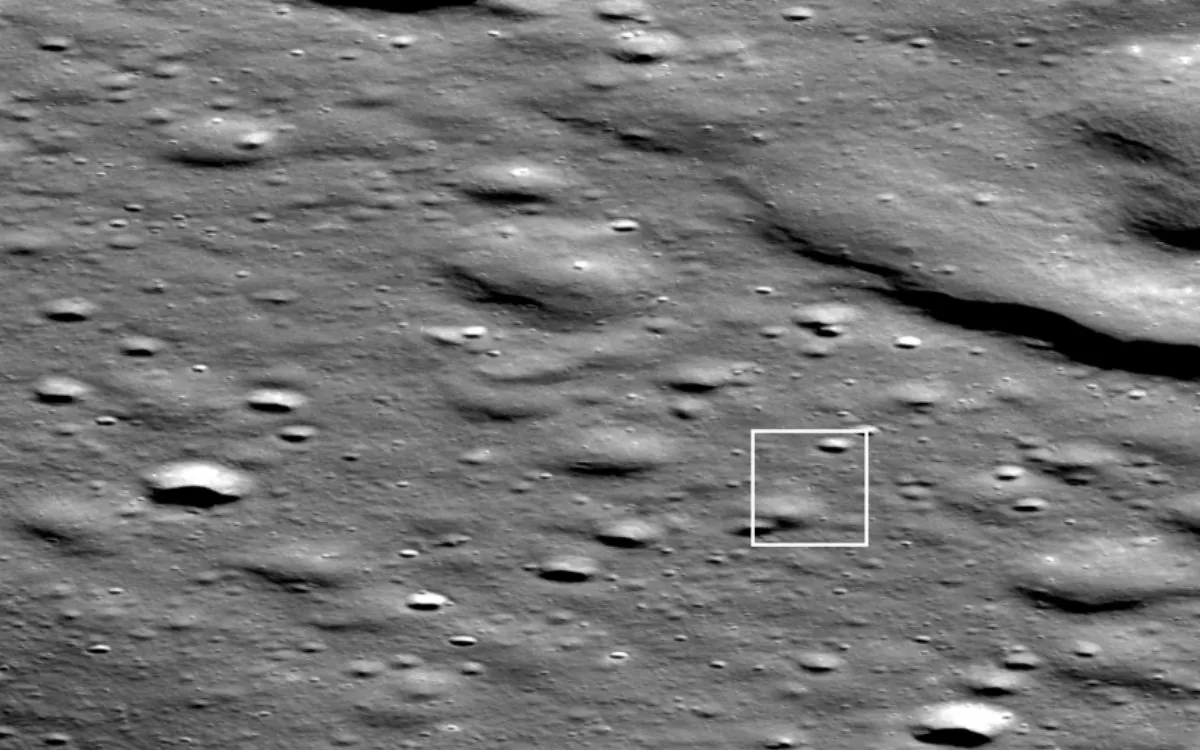
In a remarkable display of NASA's Lunar Reconnaissance Orbiter (LRO) capabilities, the spacecraft has successfully photographed Firefly Aerospace’s Blue Ghost lander on the lunar surface. This achievement highlights the orbiter's prowess in lunar surveillance, enabling scientists to monitor activities on the Moon.
The Blue Ghost lander made its historic landing on the Moon early Sunday morning, concluding a 45-day journey to our rocky satellite. The lander targeted Mare Crisium, a vast crater that translates to “Sea of Crises,” which was formed by a significant asteroid impact in the Moon's ancient history.
Just yesterday, stunning landing footage from the Blue Ghost was released, showcasing the lunar surface in sharp detail. This footage provides insight into the lander's surroundings and highlights the unique geological features of Mare Crisium.
The Lunar Reconnaissance Orbiter captured the image of the Blue Ghost when it was approximately 109 miles (175 kilometers) east of the landing site. The photograph was taken using the orbiter’s Narrow Angle Cameras on March 2, 2025. However, those expecting a high-resolution image of the lander may find themselves disappointed. Due to the distance from which the image was taken, the Blue Ghost appears as merely a single pixel in the vast lunar landscape. If you examine the image closely, you can spot the lander as a small white splotch casting a shadow near the center of the frame.
In the lower left corner of the full image, the base of Mons Latreille, a prominent lunar mountain in Mare Crisium, can be observed. This visual context adds depth to our understanding of the lunar geography surrounding the Blue Ghost lander.
The mission of the Blue Ghost is aptly named "Ghost Riders in the Sky" and includes 10 demonstration instruments from NASA's Commercial Lunar Payload Services (CLPS) initiative. These instruments are crucial for advancing lunar exploration and preparing for future human presence on the Moon. To stay updated on the lander’s mission progress, you can visit the Firefly Aerospace website.
Since its successful landing, the Blue Ghost has begun deploying its payloads, sampling lunar regolith, and capturing additional photographs from the surface. It is set to spend two weeks—equivalent to a lunar day—analyzing the Moon's surface using NASA instruments. This research will provide valuable data to scientists, enhancing our understanding of the Moon in preparation for future manned missions.
As we continue to explore the Moon with innovative technologies like the Lunar Reconnaissance Orbiter and Blue Ghost, the potential for new discoveries remains limitless, paving the way for a sustained human presence on our celestial neighbor.